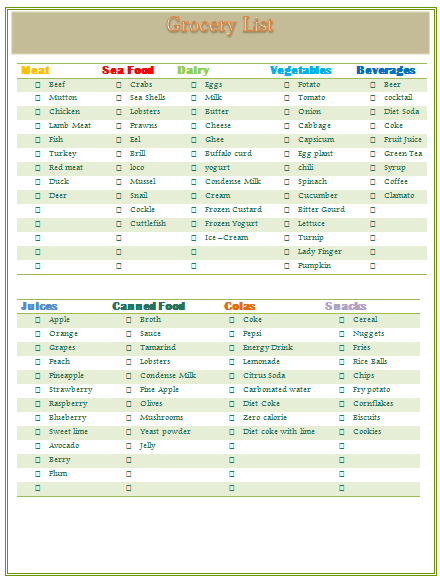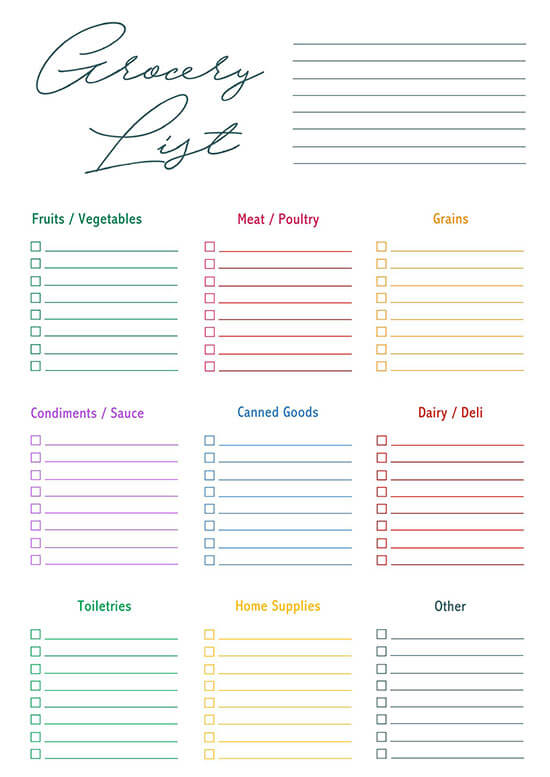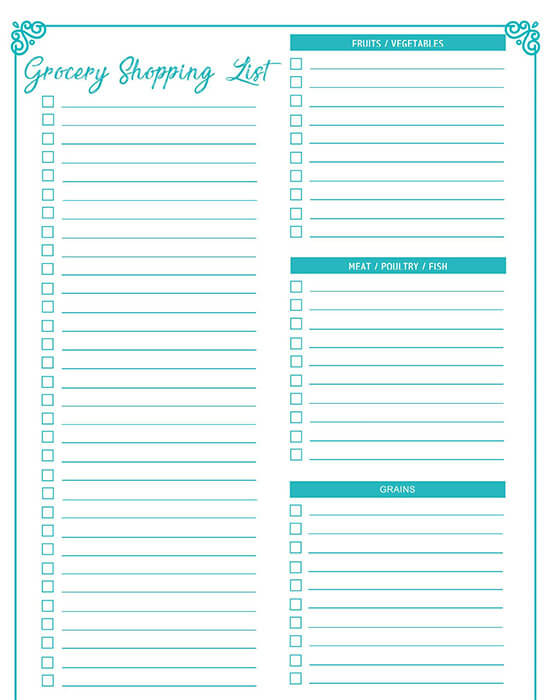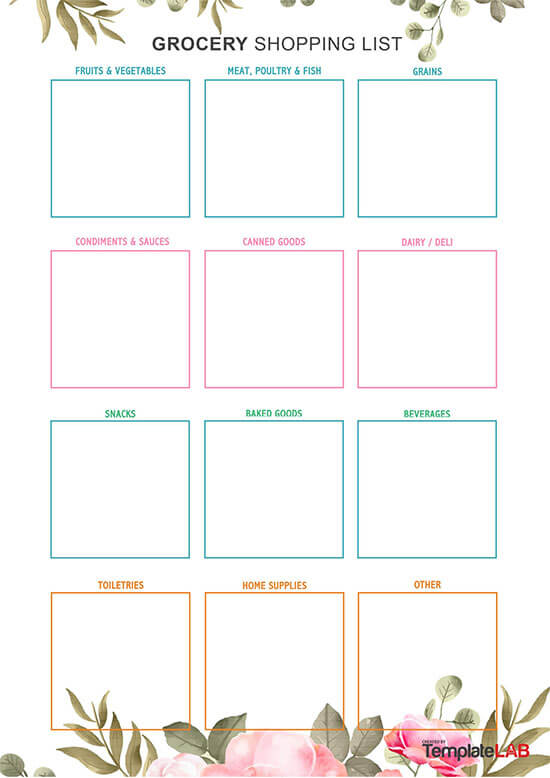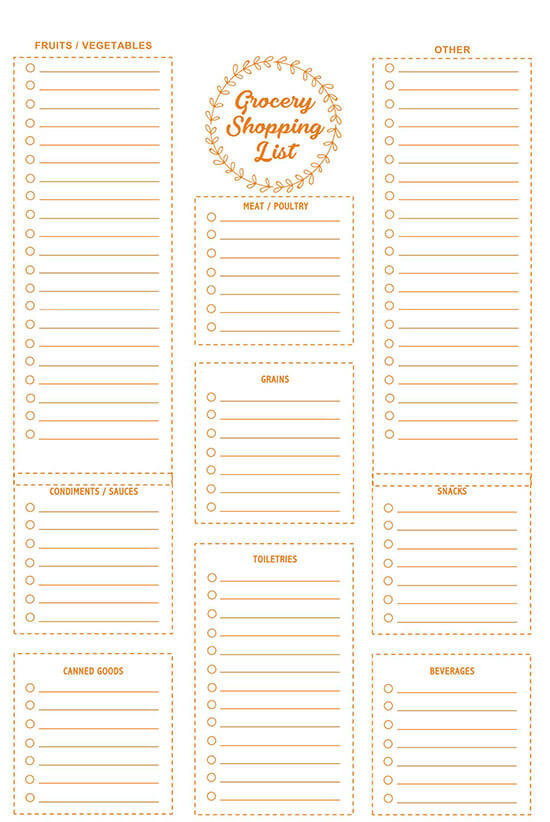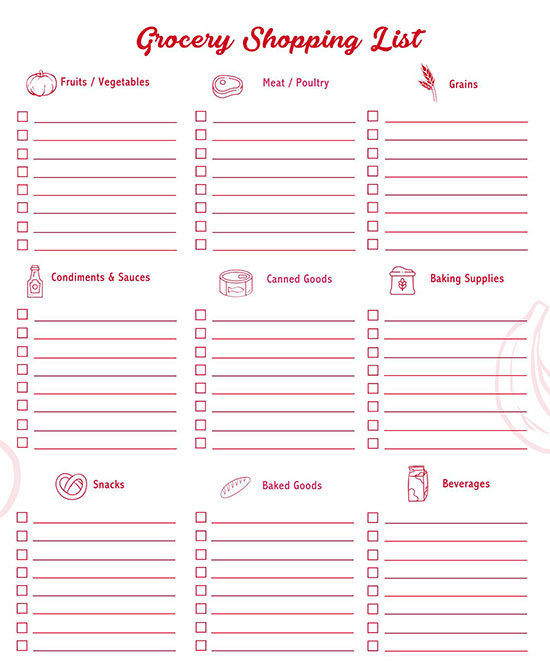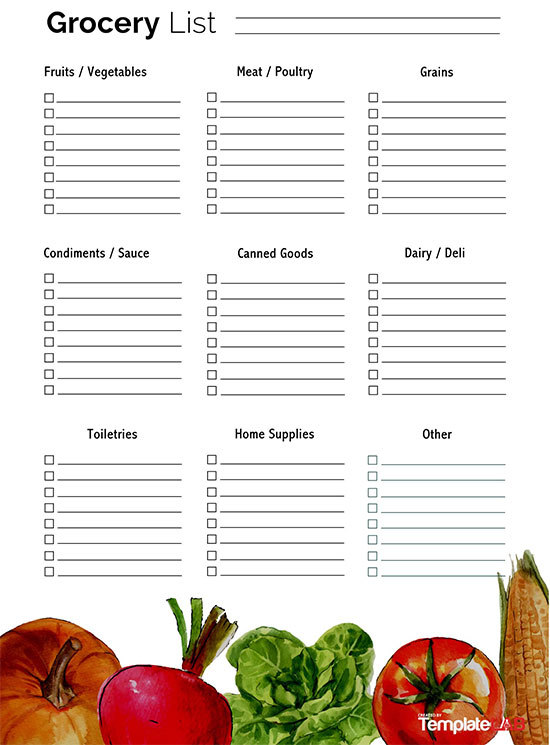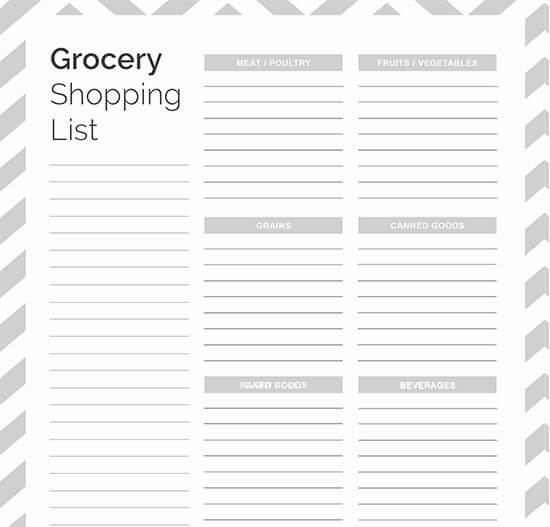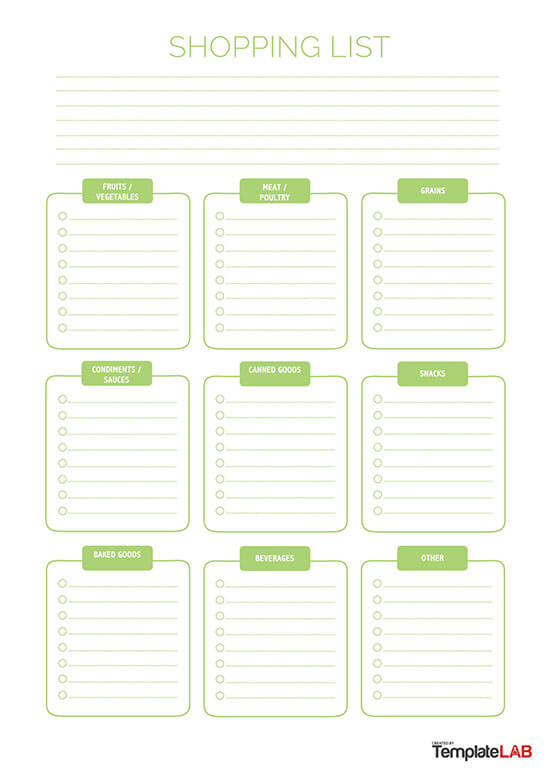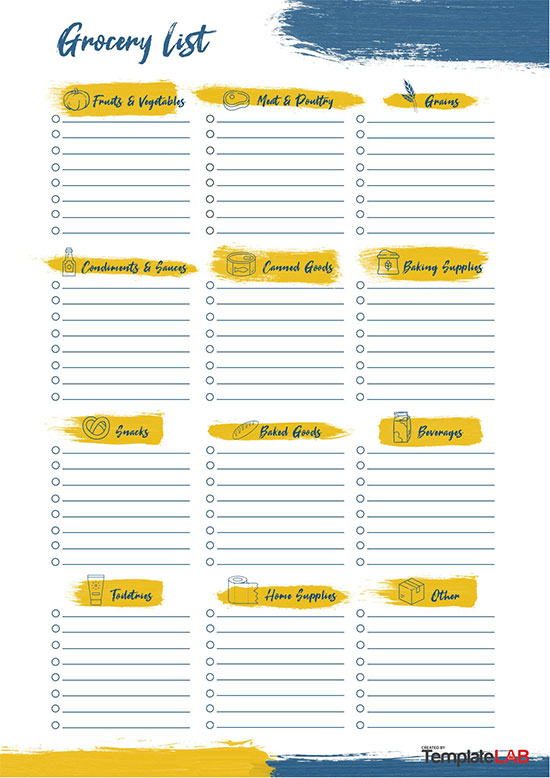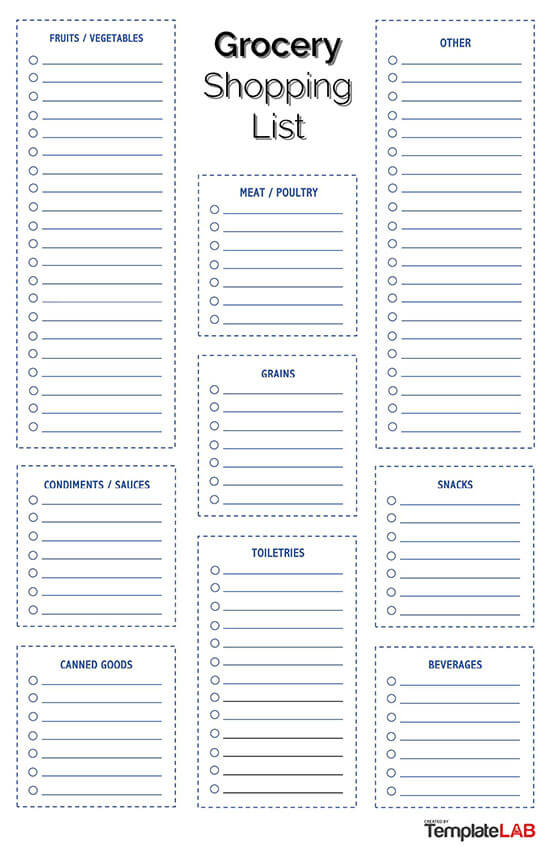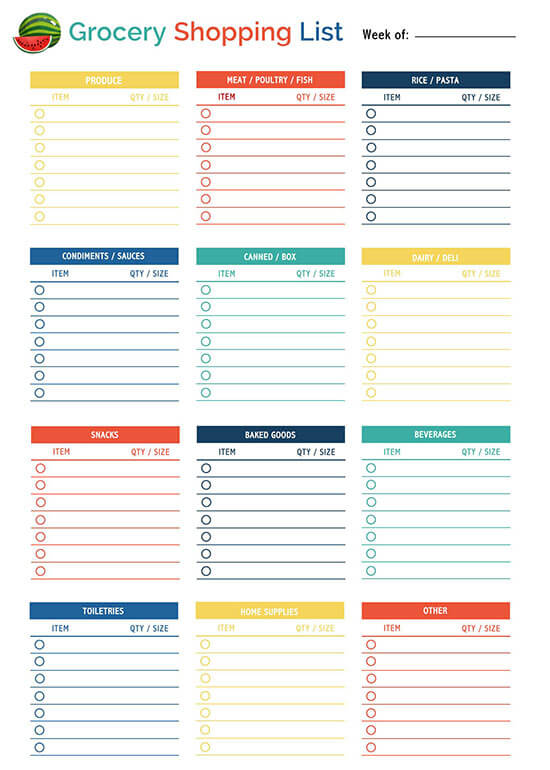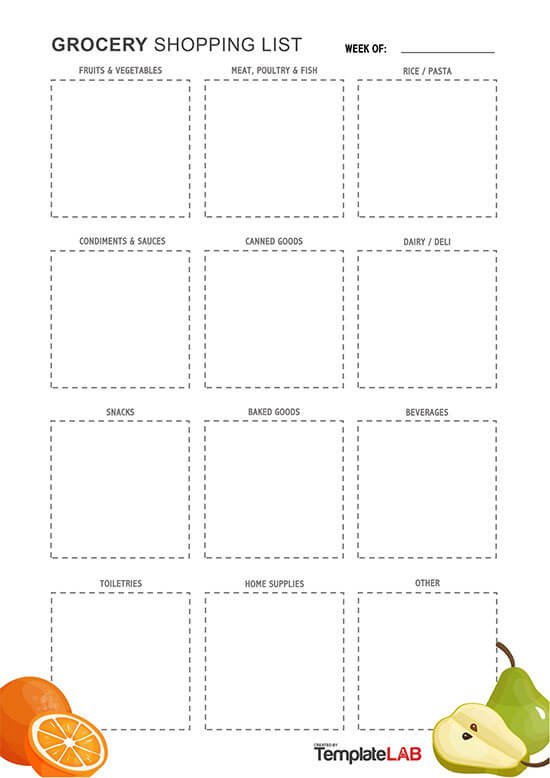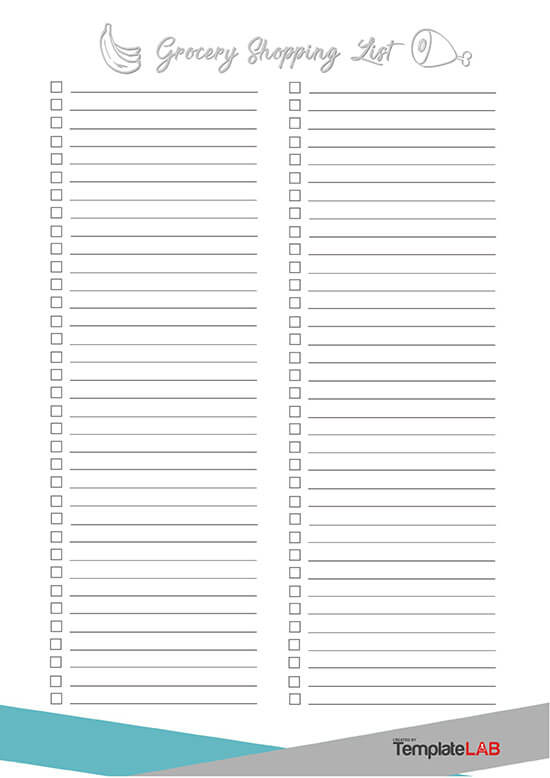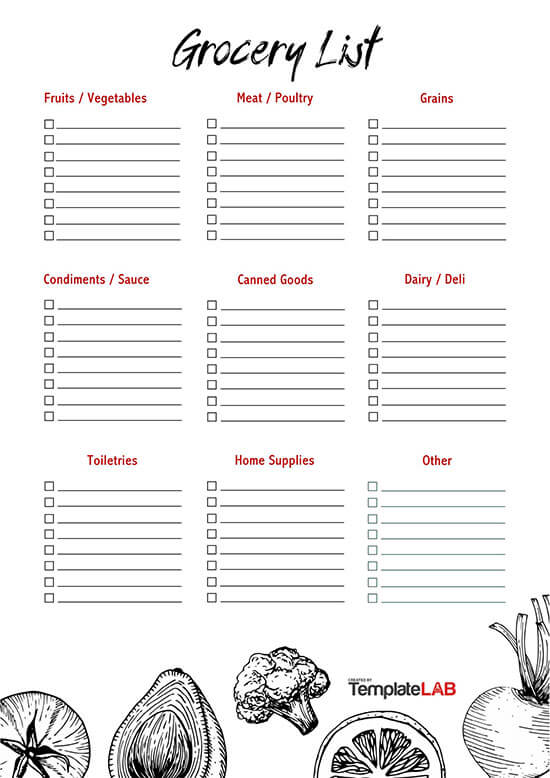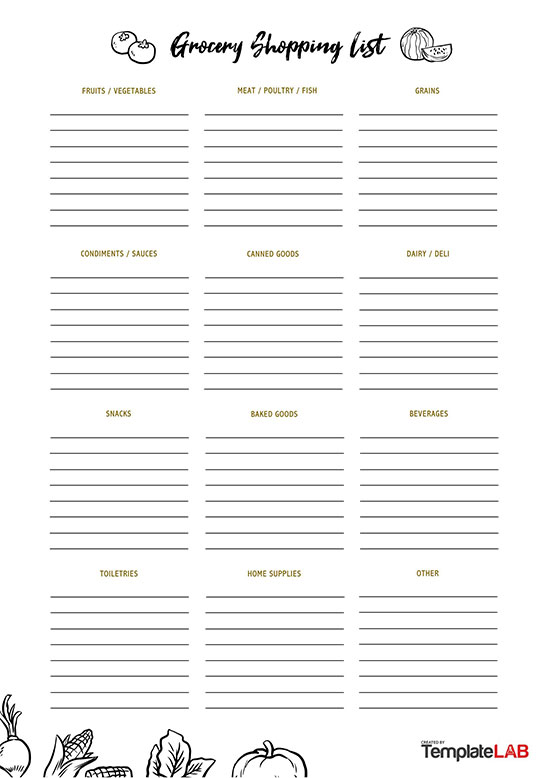Did you know that the grocery list template is a great ally when saving? It helps you focus on what you need and avoids wasting time and money on buying unnecessary things due to the sheer lack of planning. It is a simple resource that, if used well, considerably reduces spending on daily and monthly purchases.
In addition, when preparing a grocery list before shopping, you avoid new trips to the supermarket during the month to purchase what was missing or was not enough for the entire period. And you know well that each new visit to the market is always an invitation to unnecessary expenses.
Steps to Make a Grocery List Template
Following are a few simple steps to make an economical grocery list template covering everything you need while staying on the budget:
Get a clear idea of what you need
Before preparing a grocery list template, check the closets and pantry, which must already be organized. Think about what you use during the month and see what is missing or almost gone. There is no need to be in a hurry to check this out. Sectors are needed in this. See some examples below.
Food
Divide your needs between breakfast, snacks, lunch, and dinner. That done, start to imagine your routine and think about what is consumed at home. For example:
- coffee, milk, and juices
- sugar or sweetener
- bread and cookies
- cheese, ham and other sausages
- rice, beans, pasta, and cereals
- meat, chicken, and fish
- tomato sauce, ketchup, mayonnaise, etc
Cleaning material
Include what you use for cleaning the house, cleaning clothes and objects, among other things. Here are some items to include in the grocery list template:
- disinfectant
- furniture polish
- washing powder or liquid
- fabric softener
- bleach
- alcohol
- detergent etc
Personal hygiene
This part is simpler. So, remember to include deodorant, shampoo, conditioner, toilet paper, tissues, and everything else that is part of your hygiene routine.
That makes it easier to remember everything, do you agree? If necessary, read the list again after finishing it to see if anything important is left out.
Write down the necessary items before shopping
You already know everything you need to keep the house in order, do you agree? Now, the next step is to check the cabinets and pantry to see how much you already have for each item. Thus, the risk of spending on what is not needed at the moment is eliminated.
Think about how much you need to spend the entire month and put on the list only the amount left to complete the stock. For example, if you spend five kilos of rice a month and have one in the pantry, you only need to buy four more.
It may be that the first few times, you are not so sure of the amount needed, but gradually you will learn exactly how much you need to spend the month.
Wipe the list and rethink each item
It is quite common, as we write the list, to think about a number of things that we don’t actually use much. For example, when you list items for breakfast, you can include yogurt, salami, and orange juice. But, if you are going to evaluate your routine, you suddenly notice that you rarely consume these products. So, is it really worth buying these items and taking the risk of seeing everything spoil in the fridge?
So focus on what is needed and what you use quite often. The rest can even go into planning, but in very small quantities, so that you can test whether it will actually be consumed or not.
Many people take advantage of the credit card temptation and make huge purchases, including things that are not necessary. This is a step towards getting into debt and falling into default. Therefore, it is important to fit your purchases within your monthly budget. This way, you set a ceiling and don’t risk spending too much.
Note prices and brands
With your list in hand, it’s time to head to the supermarket.Take a reasonable time for shopping and don’t do anything in a hurry. Ideally, you should write down the price and brand of each product you have purchased. So, when you go shopping again, you can see what has gone up in price or is on sale.
By the way, when you find a very good discount, consider buying an extra quantity, if it is not a product that spoils easily. Thus, you will have stock for the next month and can save on the next purchases.
Writing down brands and prices also has another important benefit: that of comparison. Generally, we easily stick to the routine and get into the habit of always going to the same place of shopping. But if you stop by another supermarket, you can take the opportunity to see the offers or if the prices are more affordable.
By following this tip and taking note of your purchases, you will have a rich tool at your disposal: a great history, month by month. It is very important to help you understand, for example, your average usage of each item. Knowing how much you consume, it is easier to design your needs.
Free Grocery List Templates
Using a grocery list template increases your productivity and helps you to focus on other tasks. You can also download and use our FREE editable grocery list templates to manage your list more effectively:
Quick Tips for Economical Grocery List
Thinking to help in this aspect, we list 3 important tips for you to get it right in the preparation of your own shopping list.
Keep closets and pantry organized
Before you even start making your list, it is best to keep your home supply locations tidy. Thus, it is easy to see what needs to be acquired. Therefore, tidy up the cupboards and pantry, separating items by category: cereals and grains, snacks, cleaning supplies, personal hygiene, etc.
If you are not one of those people who keep everything in jars, consider starting it. Opening packages of rice, beans, and others without using everything carries two risks: the most serious is contamination, as the food can be exposed. The second is to lose control over the actual quantity of each item by storing several leftovers separately.
Organizing closets is, therefore, the best practice to control purchases, avoid waste, and also facilitate everyday life, since everything has the right place and is within reach.
Enjoy the benefits of technology
Instead of making a list in your notebook, how about using what you have at hand? We’re talking about your smartphone exactly. Take advantage of the facilities that it brings and help yourself. You can make your shopping list on your mobile using various applications.
Any of them will make your life easier and help keep your needs in focus. That way, if you suddenly remember something is missing, you can take notes wherever you are.
Keep a saved history
In addition, a track record is an excellent savings tool. Sometimes, a brand that is being launched on the market can have a very attractive price, but, over time, it starts to increase gradually and is no longer as competitive. Use your information to look for more economical alternatives and help maintain the financial health of your pocket.
Following these tips, you will prepare a lean and very efficient shopping list, which will make your routine much easier and also help you save money.
Final Words
Building a grocery list template that is really useful for you and your family is an art – but a fairly simple art. Stick to the list, so when it comes to grocery shopping, you’ll be one step ahead. It sounds obvious, but it’s the best way to stay on budget. If you see a bargain that you can’t refuse then follow the guide above, ask yourself if this purchase makes sense: do you really need it? Will you use it? Do you have enough space at home? For an easy process, use the grocery list templates provided above.
